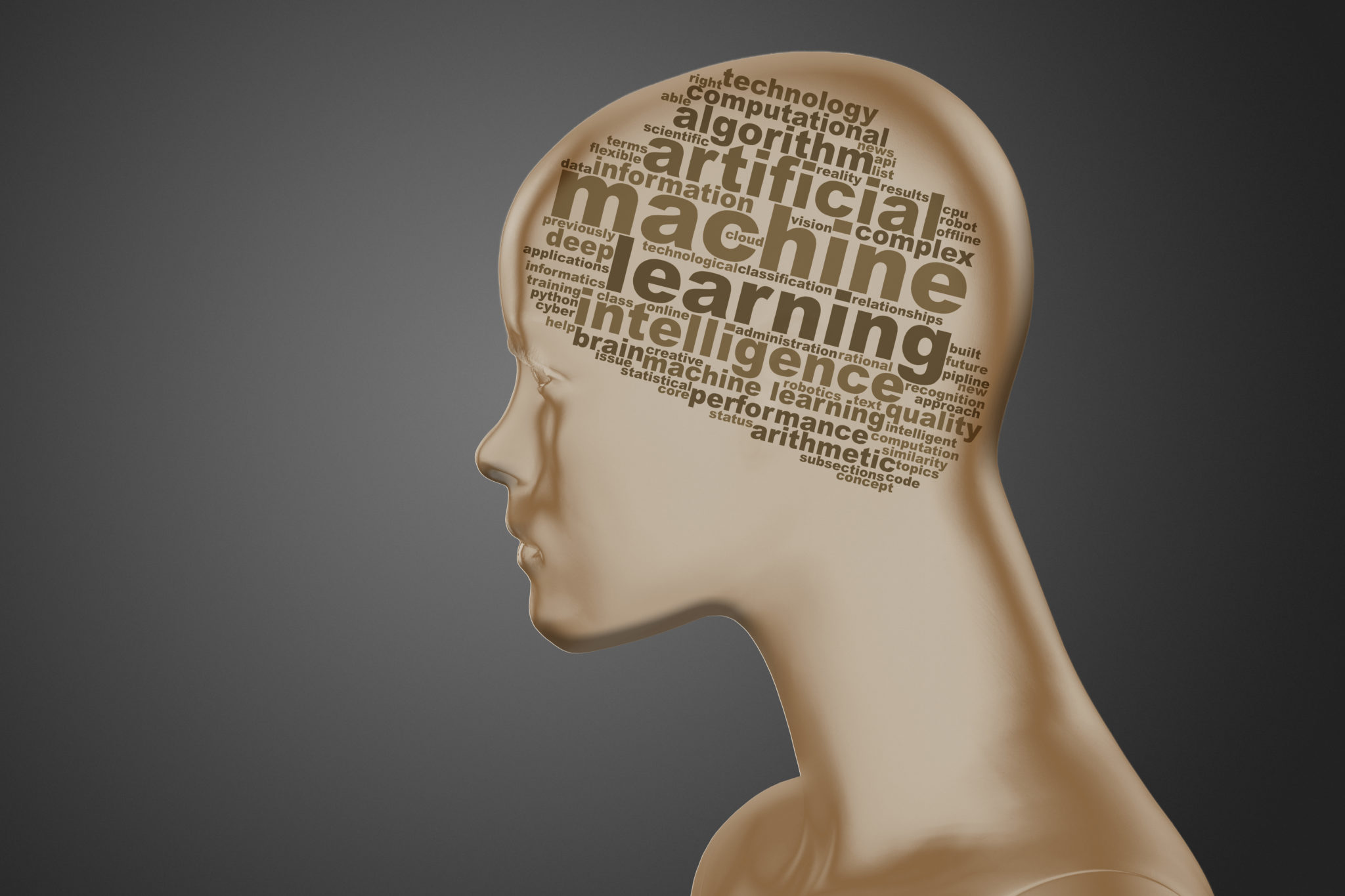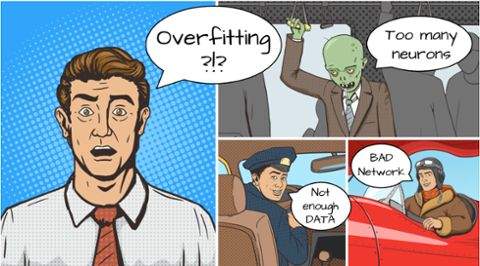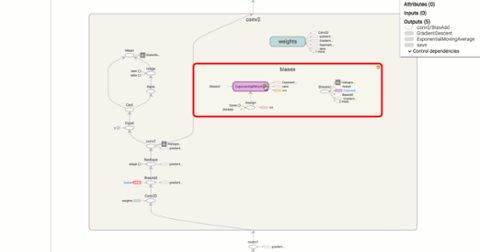
Deep learning sounds
daunting, but it’s fast becoming a necessary technology in today’s contextual world. Whether you’re building simple bots or larger neural networks, a good understanding of artificial intelligence will help you succeed in your endeavor. If you’re not even sure what deep learning is, you’re definitely not alone. It's similar to artificial intelligence or
machine learning, except at a more granular level. At its core is the building and programming of
neural networks that allow machines to decipher speech or text to suit various needs. The best expression of deep learning comes with digital assistants such as Siri or Google Now. You might ask those apps what time a particular movie is playing at your local theater, only to find none of the showings suit your schedule. From there, saying something like “Where else is it playing?” would be natural for a human-to-human interaction. But typical software has no idea how to parse that sentence; it needs to be programmed to understand the context of 'it,' 'where else,' and so on. That's where deep learning comes in. While interacting with a platform that takes full advantage of artificial intelligence feels natural, it takes a lot of programming energy to ensure that everything works correctly; if you're pleased with the ability of Siri or Google Now to answer your vague queries, it's because Apple and Google poured years of effort and millions of dollars into their development.

Getting into deep learning doesn't require a
massive Mother-Brain, either. Deepgram, a tech firm that specializes in machine-based speech transcription and analysis,
posted recently on its blog that one of the main factors contributing to the growth of deep learning is “computing hardware is now fast and cheap enough to make deep learning accessible to just about anyone with a decent graphics card in their PC. (In our own testing, we've found that one GPU server is about as fast as 400 CPU cores for running the algorithms we're using.)” Deep learning is also available in the open-source community: over 4,500 GitHub
repositories from 448 users are available for you to fork and toy with as you're venturing into the field. Educators are likewise on-board. Udacity has partnered with Google on a dedicated
course that focuses on TensorFlow. Others such as
Treehouse and
Coursera offer lessons with applicable information, while
Udemy has a dedicated four-hour deep learning course. (All require some prior know-how, however.) Nor is this a discipline that requires total mastery. Many job listings that include ‘deep learning’ in the description are for roles with a somewhat different focus, such as software engineering. Many of these roles focus on computer vision or machine learning, which provide a stepping-stone to deep learning for anyone interested. If you're curious about what deep learning can do, now might prove a good time to start exploring.
 Deep learning sounds daunting, but it’s fast becoming a necessary technology in today’s contextual world. Whether you’re building simple bots or larger neural networks, a good understanding of artificial intelligence will help you succeed in your endeavor. If you’re not even sure what deep learning is, you’re definitely not alone. It's similar to artificial intelligence or machine learning, except at a more granular level. At its core is the building and programming of neural networks that allow machines to decipher speech or text to suit various needs. The best expression of deep learning comes with digital assistants such as Siri or Google Now. You might ask those apps what time a particular movie is playing at your local theater, only to find none of the showings suit your schedule. From there, saying something like “Where else is it playing?” would be natural for a human-to-human interaction. But typical software has no idea how to parse that sentence; it needs to be programmed to understand the context of 'it,' 'where else,' and so on. That's where deep learning comes in. While interacting with a platform that takes full advantage of artificial intelligence feels natural, it takes a lot of programming energy to ensure that everything works correctly; if you're pleased with the ability of Siri or Google Now to answer your vague queries, it's because Apple and Google poured years of effort and millions of dollars into their development.
Deep learning sounds daunting, but it’s fast becoming a necessary technology in today’s contextual world. Whether you’re building simple bots or larger neural networks, a good understanding of artificial intelligence will help you succeed in your endeavor. If you’re not even sure what deep learning is, you’re definitely not alone. It's similar to artificial intelligence or machine learning, except at a more granular level. At its core is the building and programming of neural networks that allow machines to decipher speech or text to suit various needs. The best expression of deep learning comes with digital assistants such as Siri or Google Now. You might ask those apps what time a particular movie is playing at your local theater, only to find none of the showings suit your schedule. From there, saying something like “Where else is it playing?” would be natural for a human-to-human interaction. But typical software has no idea how to parse that sentence; it needs to be programmed to understand the context of 'it,' 'where else,' and so on. That's where deep learning comes in. While interacting with a platform that takes full advantage of artificial intelligence feels natural, it takes a lot of programming energy to ensure that everything works correctly; if you're pleased with the ability of Siri or Google Now to answer your vague queries, it's because Apple and Google poured years of effort and millions of dollars into their development.  Getting into deep learning doesn't require a massive Mother-Brain, either. Deepgram, a tech firm that specializes in machine-based speech transcription and analysis, posted recently on its blog that one of the main factors contributing to the growth of deep learning is “computing hardware is now fast and cheap enough to make deep learning accessible to just about anyone with a decent graphics card in their PC. (In our own testing, we've found that one GPU server is about as fast as 400 CPU cores for running the algorithms we're using.)” Deep learning is also available in the open-source community: over 4,500 GitHub repositories from 448 users are available for you to fork and toy with as you're venturing into the field. Educators are likewise on-board. Udacity has partnered with Google on a dedicated course that focuses on TensorFlow. Others such as Treehouse and Coursera offer lessons with applicable information, while Udemy has a dedicated four-hour deep learning course. (All require some prior know-how, however.) Nor is this a discipline that requires total mastery. Many job listings that include ‘deep learning’ in the description are for roles with a somewhat different focus, such as software engineering. Many of these roles focus on computer vision or machine learning, which provide a stepping-stone to deep learning for anyone interested. If you're curious about what deep learning can do, now might prove a good time to start exploring.
Getting into deep learning doesn't require a massive Mother-Brain, either. Deepgram, a tech firm that specializes in machine-based speech transcription and analysis, posted recently on its blog that one of the main factors contributing to the growth of deep learning is “computing hardware is now fast and cheap enough to make deep learning accessible to just about anyone with a decent graphics card in their PC. (In our own testing, we've found that one GPU server is about as fast as 400 CPU cores for running the algorithms we're using.)” Deep learning is also available in the open-source community: over 4,500 GitHub repositories from 448 users are available for you to fork and toy with as you're venturing into the field. Educators are likewise on-board. Udacity has partnered with Google on a dedicated course that focuses on TensorFlow. Others such as Treehouse and Coursera offer lessons with applicable information, while Udemy has a dedicated four-hour deep learning course. (All require some prior know-how, however.) Nor is this a discipline that requires total mastery. Many job listings that include ‘deep learning’ in the description are for roles with a somewhat different focus, such as software engineering. Many of these roles focus on computer vision or machine learning, which provide a stepping-stone to deep learning for anyone interested. If you're curious about what deep learning can do, now might prove a good time to start exploring. 


